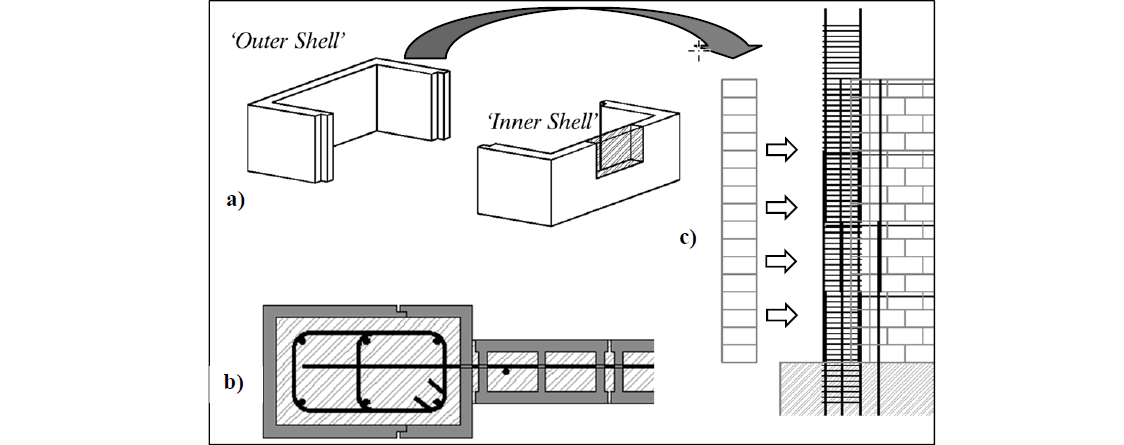1 Ph.D., Department of Civil Engineering, McMaster University, Hamilton, ON, Canada, bantinbr@mcmaster.ca
2 Martini, Mascarin and George Chair in Masonry Design, Department of Civil Engineering, Hamilton, ON, Canada, eldak@mcmaster.ca
ABSTRACT
The lack of a Ductile Shear Wall category of seismic force resisting system (SFRS) from the current Canadian masonry structures design standard CSA 304.1 as well as National Building Code of Canada (NBCC) puts masonry construction at a competitive disadvantage with reinforced concrete (RC ). The lack of any such SFRS arises from historical perception s of masonry performance as well as known limitations in traditional wall systems. To address these issues an experimental program has been conducted at McMaster University towards quantifying the behavior of fully-grouted reinforced masonry (RM) walls with confined boundary elements which contain a double layer of vertical reinforcement with lateral confinement stirrups. A total of 10 walls have been tested under reversed cycles of lateral displacement. Based on the experimental data gathered, a series of prescriptive design requirements are proposed in this paper to estimate wall stiffness and yield displacement necessary to estimate seismic demands. The necessary detailing and anticipated stress -strain behavior of the boundary element is also established. To facilitate construction the use of a new type of pilaster unit is proposed that will permit proper detailing and inspection of the reinforcement within a confined boundary element.
KEYWORDS: boundary elements, confinement, design codes, seismic design, shear walls
361.pdf



